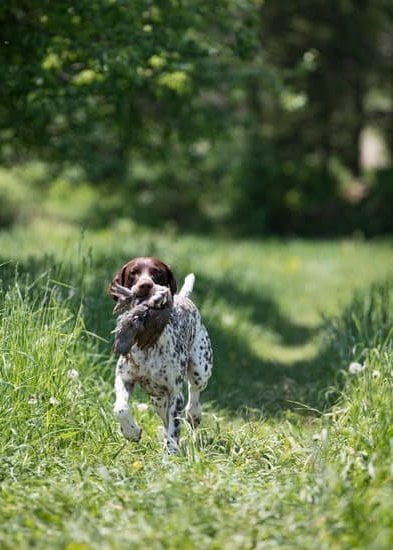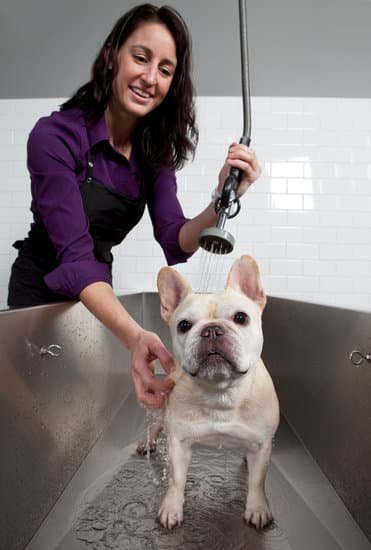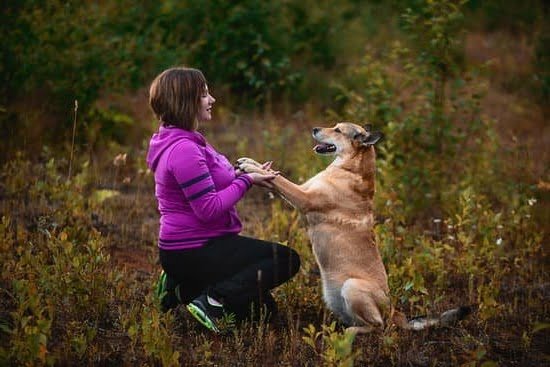Training multiple dogs at the same time can be a challenging yet rewarding experience. The excitement of working with multiple furry companions is undeniable, but it also brings its fair share of challenges. However, the benefits that come from training multiple dogs together are worth the effort. From building pack harmony to saving time, there are numerous advantages to training multiple dogs simultaneously.
When training multiple dogs, it is crucial to understand and cater to each dog’s individual needs and abilities. Every pup has their unique personality traits, energy levels, and learning styles. By assessing these factors, you can customize your approach to training for each dog. This not only ensures that their specific needs are met but also allows you to prioritize goals and focus on areas where each dog may require extra attention.
Before diving into group training sessions, it is important to establish a solid foundation of basic obedience for each dog individually. Teaching essential commands like “sit,” “stay,” “come,” and “leave it” will provide a strong groundwork for group training. By ensuring that each dog understands these basic commands on an individual level, they will have an easier time following instructions and maintaining discipline during group sessions.
One of the biggest challenges in training multiple dogs together is managing distractions. Dogs naturally react differently when other dogs are present, whether out of excitement or competition for attention. Teaching focus and impulse control are crucial skills that help dogs maintain their attention amidst distractions during training sessions. Implementing techniques and exercises that strengthen these skills will greatly improve your ability to train multiple dogs effectively.
Overall, with careful planning and dedication, training multiple dogs at the same time can lead to a harmonious and well-behaved pack.
By understanding each dog’s needs, establishing a solid foundation of obedience, managing distractions effectively, utilizing positive reinforcement techniques, addressing individual challenges as they arise, conducting small group sessions strategically, providing fair attention to each dog during training sessions, monitoring progress closely, and gradually advancing training levels, you can overcome the challenges and enjoy the rewards of a well-trained pack.
Assessing Your Dogs’ Individual Needs and Abilities
When training multiple dogs at the same time, it is crucial to understand each dog’s unique needs and abilities. Just like humans, dogs have their own personalities, energy levels, and learning styles that can greatly affect their training progress. By taking the time to assess your dogs individually, you can tailor your training approach to meet their specific requirements, ultimately increasing the effectiveness of your training sessions.
To assess your dogs’ individual needs and abilities, start by observing their behavior and temperament. Take note of how they interact with other dogs, people, and different environments. Understanding their socialization skills will help determine whether they may need additional work in that area. Additionally, consider their energy levels – some dogs may be more high-energy and require more vigorous exercise before training sessions.
Learning style is another important factor to consider when assessing your dogs’ individual needs. Some dogs may respond better to visual cues and demonstrations, while others may learn more effectively through verbal instructions or hands-on guidance. By identifying each dog’s preferred learning style, you can adapt your training methods accordingly.
Once you have assessed your dogs individually, it is essential to prioritize their training goals. Determine which behaviors or commands are most important for each dog to learn first based on their needs and any existing behavior issues. This will allow you to focus on the areas where they require the most improvement.
By understanding each dog’s unique personality, energy levels, and learning styles, you can create a personalized training plan for each of them. This tailored approach will not only accelerate their learning but also ensure that they receive the attention and guidance they need throughout the training process.
| Needs | Abilities |
|---|---|
| – Socialization skills | – Energy levels |
| – Learning style | – Prioritized training goals |
Establishing a Solid Foundation
Training multiple dogs at the same time requires a solid foundation of basic obedience for each individual dog. Before attempting group training sessions, it is crucial to teach each dog essential commands individually. This section will discuss the importance of basic obedience training and provide step-by-step instructions on how to teach commands like “sit,” “stay,” “come,” and “leave it” to each dog.
The Importance of Basic Obedience
Basic obedience training lays the groundwork for effective group training sessions by teaching each dog fundamental commands. It establishes clear communication between you and your dogs, ensuring that they understand what you expect from them. By teaching commands such as “sit” and “stay,” you can maintain control over your dogs in various situations, making daily activities more manageable.
Teaching Essential Commands
When teaching basic obedience commands to each dog, consistency is key. Here are some step-by-step instructions on how to teach common basic obedience commands:
- Sit: Start with a treat in your hand and hold it above your dog’s nose. Slowly move the treat backward towards their tail, causing them to naturally sit down. As soon as their bottom touches the ground, say “sit” and reward them with the treat and praise.
- Stay: Begin with your dog in a sit position. Extend your hand, palm facing outward, and say “stay.” Take one step back while maintaining eye contact with your dog. If they stay in place, return to them immediately and reward them. Gradually increase the distance and duration of your absence while reinforcing the stay command consistently.
- Come: Start indoors or in a quiet enclosed space with minimal distractions. Use a long leash attached to your dog’s collar or harness for added control initially. Back away from your dog while saying their name followed by “come” in an excited and encouraging tone. Gently tug on the leash if necessary and reward them with a treat and praise when they reach you.
- Leave it: Hold a treat in your closed hand while presenting it to your dog. Say “leave it” firming but not aggressively. Your dog may try various strategies, such as pawing or sniffing your hand, to get the treat. Wait for them to stop and redirect their attention elsewhere, then reward them with a different treat and praise.
By following these step-by-step instructions and practicing consistently, you can establish a solid foundation of basic obedience for each dog before advancing to group training sessions. Remember to be patient and provide positive reinforcement throughout the training process. With perseverance and consistency, you will set the stage for successful training sessions with multiple dogs.
Managing Distractions
Training multiple dogs at the same time can be challenging due to the presence of distractions. However, teaching focus and impulse control is essential for successful group training sessions. By helping your dogs maintain their attention amidst distractions, you can build a solid foundation for more advanced training exercises.
To teach focus and impulse control, it is important to start with basic obedience commands in a controlled environment. Begin by practicing these commands individually with each dog to establish a strong foundation before moving on to group training. Use positive reinforcement techniques such as treats, praise, and playtime rewards to motivate your dogs to pay attention and ignore distractions.
Here are some techniques to improve focus and impulse control during training sessions:
- Gradually introduce distractions: Start with minimal distractions and gradually increase their intensity as your dogs become more proficient in their commands. This will help them learn to stay focused even when faced with distractions.
- Use “wait” or “leave it” commands: Teach your dogs to wait or leave an object or treat until given permission. This will help develop self-control and prevent impulsive behavior when faced with tempting distractions.
- Incorporate impulse control exercises: Engage your dogs in activities that promote self-control, such as asking them to hold a sit-stay position while you walk away or tossing a toy but rewarding them only if they wait for your command before retrieving it.
- Practice attention exercises: Train your dogs to respond quickly to their names or cues for eye contact, which will help redirect their focus back to you during distracting situations.
Remember that consistency is key when teaching focus and impulse control. Train in different environments with varying levels of distractions so that your dogs will generalize their skills beyond just one specific setting.
By mastering focus and impulse control, you can set a strong foundation for further training and ensure that your dogs remain engaged and responsive even in the presence of distractions.
Utilizing Positive Reinforcement and Rewards for Effective Training
Training multiple dogs at the same time can be a challenging task, but by utilizing positive reinforcement and rewards, you can make the process more effective. Positive reinforcement is a training technique that involves rewarding your dogs for exhibiting desired behaviors, which encourages them to repeat those behaviors in the future. This method not only helps to reinforce good behavior but also builds a positive association with training sessions.
When using positive reinforcement, it is important to find the right rewards that motivate each dog individually. Some dogs may be food-motivated, while others may respond better to play or praise. By understanding what motivates each of your dogs, you can tailor your rewards to their preferences.
In addition to identifying appropriate rewards, timing is crucial when utilizing positive reinforcement. Dogs have a short attention span, so it’s essential to deliver the reward immediately after they perform the desired behavior. This instant feedback helps your dogs understand what they did correctly and reinforces the connection between their actions and the reward.
To effectively utilize positive reinforcement in training multiple dogs, consistency is key. Make sure everyone involved in the training process understands and follows the same rules for rewarding good behavior. Consistency helps prevent confusion and ensures that all dogs receive equal opportunities for rewards.
By implementing positive reinforcement techniques and finding what motivates each of your dogs individually, you can create an enjoyable training experience that fosters cooperation and produces successful results.
| Positive Reinforcement Techniques | Description |
|---|---|
| Clicker Training | A technique where a clicker sound is used as a marker to signal correct behavior followed by an immediate reward. |
| Treats | Using small, high-value treats as rewards for desired behaviors. It is important to find treats that your dogs find particularly enticing. |
| Toy Rewards | Using toys or play as rewards for good behavior, particularly effective for dogs that are highly play-motivated. |
| Praise and Affection | Providing verbal praise and physical affection to reinforce positive behaviors, helping to build a strong bond with your dogs. |
Handling Individual Challenges
Training multiple dogs at the same time can present unique challenges when it comes to addressing behavior issues and skill gaps. Each dog is an individual with their own set of strengths, weaknesses, and specific needs. It’s important to address these challenges head-on in order to ensure a successful training experience for all dogs involved. By following some key techniques and exercises, you can tackle common challenges such as leash pulling, resource guarding, or poor recall.
One essential aspect of addressing behavior issues and skill gaps is to assess each dog’s specific needs and tailor your training approach accordingly. Take the time to observe each dog’s behavior and identify any areas that require improvement. This could include problems like excessive barking, jumping on guests, or struggling with commands. Once you’ve identified the challenges, you can develop a targeted plan to address them.
To tackle behavior issues and skill gaps effectively, it’s important to use positive reinforcement techniques that encourage desired behaviors while discouraging unwanted ones. For example, if one of your dogs has a tendency to pull on the leash during walks, you can implement leash walking exercises that focus on loose leash walking and rewarding calm behavior.
Similarly, if resource guarding is an issue for one of your dogs, you can work on teaching them the “leave it” command using positive reinforcement methods.
Addressing individual challenges also requires patience and consistency. Each dog may require different strategies or adjustments based on their unique personality traits or learning styles. It’s important to be flexible in your approach and adapt as needed. Regularly monitor each dog’s progress as they work through their individual challenges and be prepared to make necessary adjustments along the way.
By actively addressing behavior issues and skill gaps in each dog during training sessions, you will create a stronger foundation for overall pack harmony. By consistently reinforcing desired behaviors while managing any problem areas effectively, you can ensure that all of your dogs will develop the necessary skills for a well-trained and happy pack.
- Assess each dog’s specific needs and tailor your training approach accordingly
- Use positive reinforcement techniques to encourage desired behaviors and discourage unwanted ones
- Be patient, consistent, and prepared to make adjustments as needed
Training in Small Group Sessions
Training multiple dogs together in small group sessions can be an effective way to build cohesion and cooperation within your pack. These sessions allow the dogs to learn from one another and practice their skills in a social environment. By fostering positive interactions and promoting teamwork, you can create a strong bond between your dogs while reinforcing desired behaviors.
One of the key benefits of training multiple dogs together is that it allows for natural socialization and pack dynamics to develop. Dogs are highly social animals, and when they have the opportunity to train alongside other dogs, they can learn important communication skills, such as taking turns, sharing resources, and respecting personal space.
Training in small groups also provides a controlled environment where you can observe how your dogs interact with one another. This allows you to address any potential issues or conflicts that may arise during training.
To conduct successful group training sessions, it is important to manage interactions and create a structured environment. Start by introducing your dogs gradually, ensuring that they are comfortable and relaxed in each other’s presence before moving onto more challenging exercises. Rotations can be useful during group sessions, allowing each dog equal opportunities for individual attention and reinforcement.
Cooperative exercises play a crucial role in building cohesion among multiple dogs. Activities like synchronized sits or stays reinforce working as a team while maintaining self-control. By giving clear instructions to each dog individually but rewarding them collectively for their combined efforts, you encourage cooperation and unity within the group.
Practicing Individual Reinforcement and Attention
Providing Individual Attention
When training multiple dogs simultaneously, it is crucial to ensure that each dog receives individual attention and reinforcement. While group training sessions are beneficial for building pack harmony and cooperation, it’s important to prevent any feelings of insecurity or jealousy among the dogs. To create a balanced training environment, it’s necessary to give each dog their fair share of attention and reinforcement.
During group training sessions, allocate specific times to work with each dog individually. This individual time allows you to focus on the unique needs and learning pace of each dog. By giving them one-on-one attention, you can address any specific challenges or behavior issues they may have. Tailor your approach to suit their personality and learning style.
Promoting Fairness in Training
In order to ensure fairness during group training sessions, it is important to avoid favoritism or neglect towards any particular dog. Treat all dogs equally and provide equal opportunities for success. Avoid spending too much time working with one dog while neglecting the others, as this can lead to feelings of exclusion or frustration.
Reinforce positive behaviors and achievements in each dog consistently, ensuring that they all receive the same level of praise and rewards when appropriate. By maintaining fairness, you will promote a positive training atmosphere among your pack.
Creating Balanced Training Sessions
To ensure fulfilled training for each dog, it is necessary to create balanced training sessions that meet their individual needs. Consider the energy levels and strengths of each dog when planning your training exercises. Some dogs may require more physical activity while others may benefit from mental stimulation exercises.
Rotate through different exercises so that every dog has an opportunity to work on skills they need improvement in without getting bored or feeling left out. This will help maintain engagement from all dogs throughout the session.
Remember that while it is important to practice individual reinforcement and attention, group activities should also be encouraged. This allows the dogs to work together and reinforce their cooperative behavior.
By practicing individual reinforcement and attention while maintaining fairness and balance, you can ensure a fulfilling training experience for each dog in the group.
Gradual Progression and Monitoring
Training multiple dogs at the same time requires a strategic approach that takes into account each dog’s unique needs and abilities. Once you have established a solid foundation of basic obedience for each dog, it is important to gradually progress the difficulty level of training exercises for each individual. This section will explore the importance of gradual progression and monitoring in advancing your dogs’ training levels.
Gradual progression is crucial when training multiple dogs because it allows them to build on their existing skills and knowledge. Start by reviewing the basic commands that each dog has already mastered, such as “sit,” “stay,” “come,” and “leave it.” Once they are consistently responding to these commands, slowly introduce new challenges.
For example, you can add distractions or increase the distance or duration of each command. By gradually increasing the difficulty level, you can ensure that each dog continues to learn and improve without getting overwhelmed.
Monitoring each dog’s progress is essential in maintaining their motivation and ensuring effective training. Keep track of their individual strengths, weaknesses, and areas for improvement. This will help you tailor your training sessions to focus on specific skills that need more attention.
It is also important to recognize any signs of frustration or disinterest from your dogs. If they are struggling with a particular exercise, take a step back and break it down into smaller steps until they are successful.
Regularly reassess each dog’s performance and adjust your training methods accordingly. Not all dogs progress at the same pace, so it is important to be flexible in your approach. Some dogs may require more repetition or additional reinforcement, while others may be ready for more advanced exercises sooner. By monitoring their progress closely, you can adapt your training techniques to suit their individual needs, ensuring a successful and fulfilling learning experience for each dog.
Conclusion
In conclusion, training multiple dogs at the same time may present its own set of challenges, but with proper planning and techniques, it is definitely achievable and highly rewarding. Throughout this article, we have discussed various aspects of training multiple dogs simultaneously, from assessing their individual needs and abilities to managing distractions and addressing behavior issues.
By following these guidelines and gradually progressing the training levels for each dog, you can build a cohesive and cooperative pack that listens to your commands and behaves well both individually and as a group.
One of the key takeaways from this article is the importance of understanding each dog’s unique personality, energy levels, and learning styles. By recognizing their individual needs, you can tailor your training approach for each dog accordingly.
It is also crucial to establish a solid foundation in basic obedience for each dog before attempting group training sessions. This ensures that they have a good grasp of essential commands like “sit,” “stay,” “come,” and “leave it” before moving on to more advanced exercises.
Utilizing positive reinforcement and rewards throughout the training process is another vital aspect highlighted in this article. Positive reinforcement not only motivates dogs but also reinforces desired behaviors. By using treats, rewards, and praise effectively, you can encourage each dog to continue exhibiting positive behavior during training sessions.
Lastly, maintaining fairness and providing individual reinforcement and attention to each dog is crucial during group training sessions. It is essential to create balanced training sessions that meet the needs of each dog while promoting fairness within the pack.
While there may be challenges along the way, successfully training multiple dogs is an achievable goal that offers long-term benefits for both you and your furry companions. Embrace this challenge with patience, consistency, and dedication, knowing that the effort put into their training will result in a well-behaved pack that brings joy and harmony into your life.
Frequently Asked Questions
Can you train multiple dogs at the same time?
Training multiple dogs at the same time can be challenging but it is definitely possible with the right approach. The key is to establish clear boundaries and expectations for each dog individually while also being consistent and fair with all of them. It’s important to give each dog enough individual attention during training sessions to ensure they understand what is expected of them.
Using visual cues such as different colored leashes or harnesses for each dog can help them differentiate between commands. Additionally, maintaining a calm and structured environment during training sessions can help foster better focus and cooperation from all the dogs involved.
How do you housebreak multiple dogs at once?
Housebreaking multiple dogs at once requires a well-organized routine and plenty of patience. One effective approach is to establish designated potty areas in your home or yard where each dog can be taken separately on a regular schedule throughout the day. Consistency is key, so ensure that each dog goes out at the same times every day, including upon waking up, after meals, and before bedtime.
Supervise the dogs closely during potty breaks and reward them immediately when they eliminate in the appropriate spot to reinforce positive behavior. Accident management is essential as well – if one dog has an accident indoors, it should not be punished, but rather cleaned up thoroughly to avoid further incidents.
How do you train 4 puppies at once?
Training four puppies simultaneously requires careful planning and dedication. It’s crucial to set realistic expectations as this process may take longer than training a single puppy due to individual personalities and learning speeds. Start by teaching basic commands like sit, stay, and come using positive reinforcement techniques such as treats or praise.
However, it’s vital to ensure that each puppy has their own space during training sessions to prevent distractions or competition for attention. Utilize separate training areas or use baby gates to maintain separation until they have mastered individual commands consistently before progressing to group exercises. Socialization with other puppies or well-behaved adult dogs outside of formal training sessions can also be beneficial in teaching them proper manners and behavior around other canines.

Welcome to the blog! I am a professional dog trainer and have been working with dogs for many years. In this blog, I will be discussing various topics related to dog training, including tips, tricks, and advice. I hope you find this information helpful and informative. Thanks for reading!





